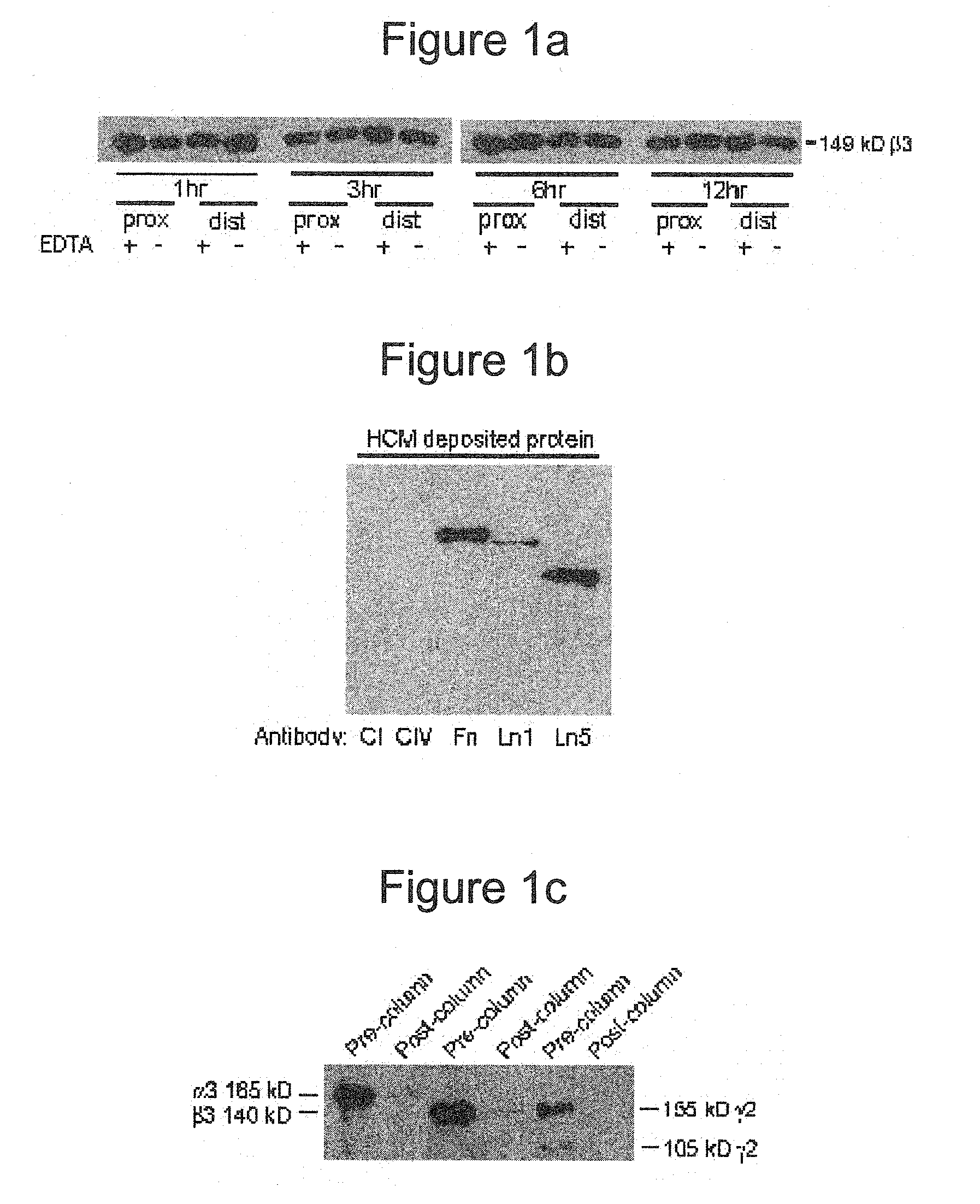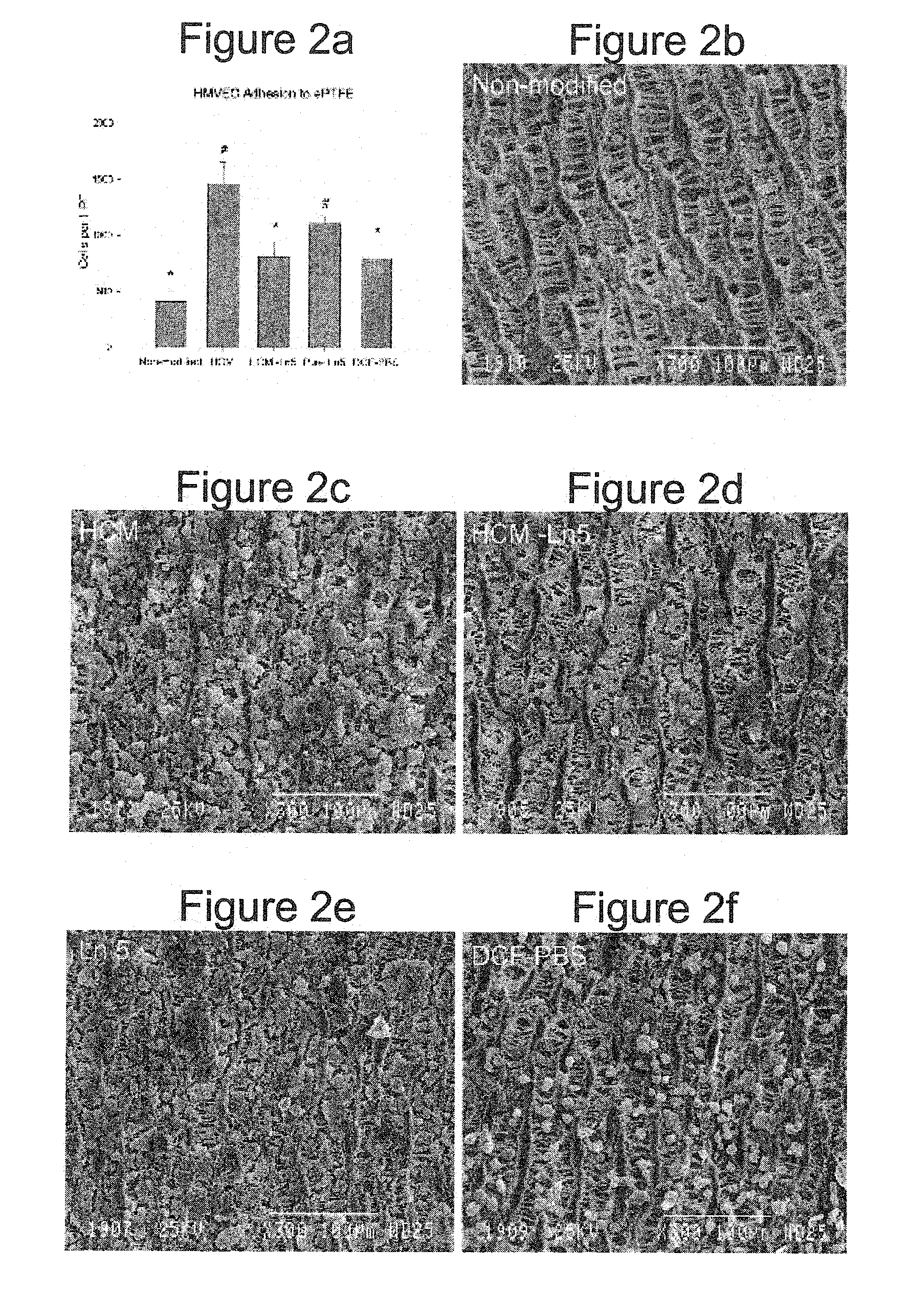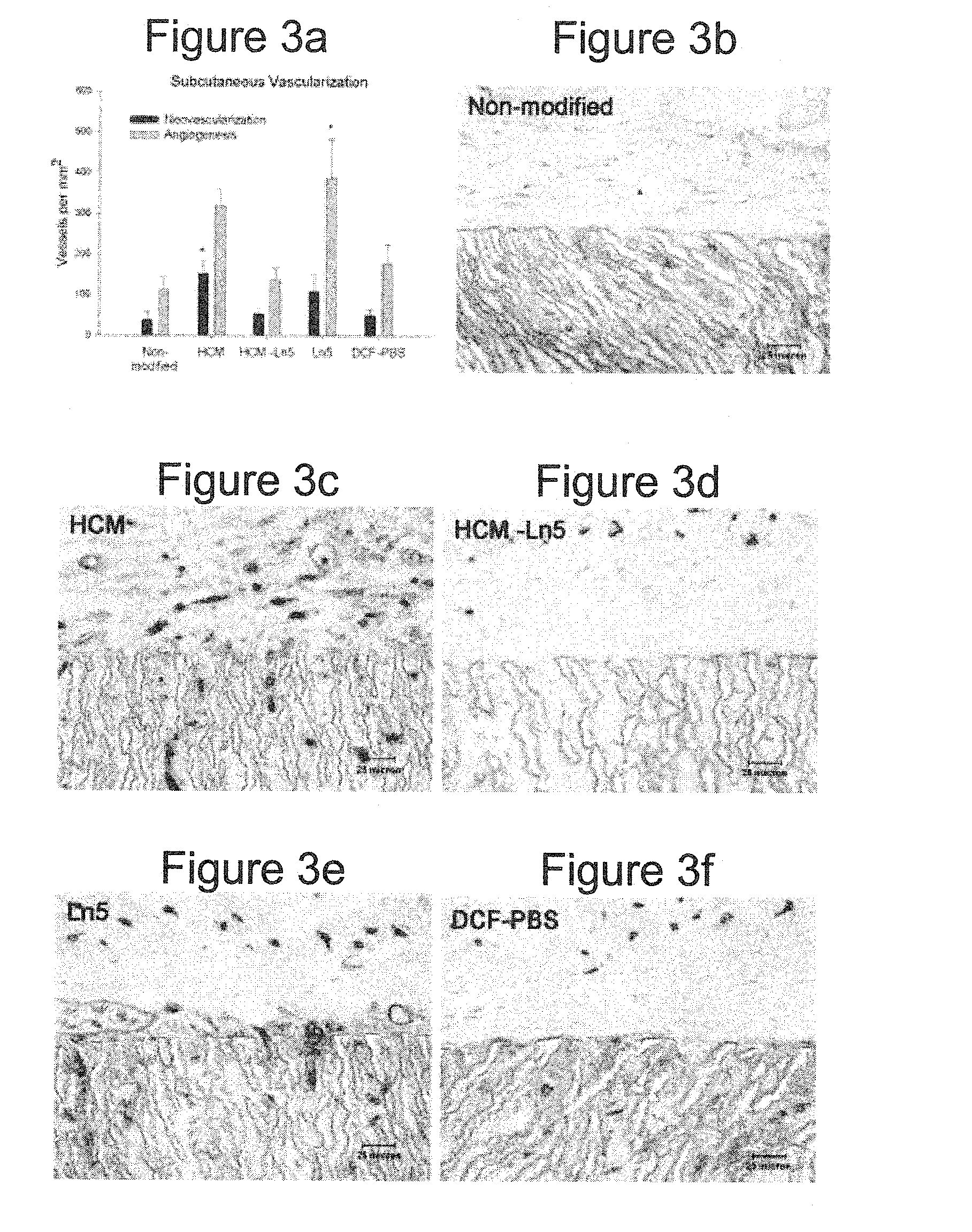Implantable medical articles having laminin coatings and methods of use
a technology of laminin coating and medical articles, which is applied in the direction of blood vessels, prostheses, peptide/protein ingredients, etc., can solve the problems of device failure in vivo, foreign body reaction, inflammation, etc., and achieve the effect of promoting the formation of blood vessels and improving the function of the articl
- Summary
- Abstract
- Description
- Claims
- Application Information
AI Technical Summary
Benefits of technology
Problems solved by technology
Method used
Image
Examples
example 1
In Vitro—Cell Culture
The HaCaT and II-4 cell lines (Dr. Norbert Fusenig (German Cancer Research Center) were maintained in culture medium (Dulbecco's Modified Eagle's Medium with high glucose, 10% fetal bovine serum, 2 mM L-glutamine, and 5 mM HEPES buffer). Cells at 70% confluence were rinsed with di-cation free phosphate buffered saline (DCF-PBS), pH 7.4, and placed in serum free medium for 48 hrs prior to collection of conditioned medium. Collected conditioned medium was centrifuged at 750 g for 5 min to remove debris prior to coating procedure.
Human microvessel endothelial cells (HMVEC) were isolated from human liposuction fat as previously described in Williams et al. (Williams, S. K., Wang, T. F., Castrillo, R. & Jarrell, B. E. Liposuction-derived human fat used for vascular graft sodding contains endothelial cells and not mesothelial cells as the major cell type. J Vase Surg 19, 916-923 (1994)). Cells were maintained in culture medium (Medium 199, 10% fetal bovine serum, 60 μ...
example 2
Binary Protein Coating Method
A heterobifunctional polyacrylamide reagent (HBPR, made as described in Example 9-U.S. Pat. No. 5,858,653) that contains amine-reactive and photo-reactive groups was used to immobilize extracellular matrix proteins onto ePTFE vascular graft (4 mm straight, C. R. Bard, Impra Corporation, Tempe, Ariz.). Matrix proteins were obtained from the following sources: bovine collagen-I (Kensey Nash), human collagen-IV (BD Biosciences), human fibronectin (BD Biosciences), mouse laminin-I (BD Biosciences), and human laminin-V (University of Arizona). Asceptic technique was used during all handling of the grafts and reagents. Grafts were cut to a 3.2 cm length. Female luer fittings (Small Parts, Inc.) were secured to each end of the graft with surgical suture. Grafts were denucleated (removing trapped air from the interstices of the graft) by soaking in isopropyl alcohol (IPA) for 20 minutes and then placing the graft in degassed Dulbecco's cation-free phosphate-buff...
example 3
Rat Implant
An in vivo study evaluated the wound healing and inflammation associated with ePTFE discs coated with the reagent and protein coatings. ePTFE Discs (4 mm diameter size, (4 mm straight, C. R. Bard, Impra Corporation, Tempe, Ariz. A photoactivatable copolymer (HBPR) was prepared as described in Example 9 of U.S. Pat. No. 5,858,653. The following samples were evaluated: uncoated ePTFE, HBPR alone, HBPR Collagen-I, HBPR Laminin-I, HBPR Laminin-V, HBPR Collagen-I / Laminin-I, and HBPR Collagen-I / Laminin-V, Photo Collagen I and Photo Laminin 1. The laminin and collagen samples were obtained from the sources described in Example 2. Photo collagen 1 and Photo laminin 1 were made by the procedures described in Example 1 of U.S. Pat. No. 5,744,515, except that collagen 1 or laminin 1 was substituted were specifically made for this example. The coating procedure for HBPR and the protein samples is described in Example 2 except that the Collagen I / Laminin V example was prepared at 10 / 5...
PUM
| Property | Measurement | Unit |
|---|---|---|
| molecular weight | aaaaa | aaaaa |
| pore size | aaaaa | aaaaa |
| pore size | aaaaa | aaaaa |
Abstract
Description
Claims
Application Information
 Login to View More
Login to View More - R&D
- Intellectual Property
- Life Sciences
- Materials
- Tech Scout
- Unparalleled Data Quality
- Higher Quality Content
- 60% Fewer Hallucinations
Browse by: Latest US Patents, China's latest patents, Technical Efficacy Thesaurus, Application Domain, Technology Topic, Popular Technical Reports.
© 2025 PatSnap. All rights reserved.Legal|Privacy policy|Modern Slavery Act Transparency Statement|Sitemap|About US| Contact US: help@patsnap.com



